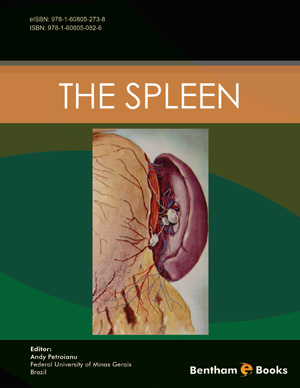Abstract
The spleen is the largest lymphoid organ in the body. It is located in the left hypochondrium and is surrounded by a thick, fibrous capsule that adheres to the parenchyma. In human beings the spleen has an elongated shape and weighs 100-200 grams, with its major diameters measuring 11 x 7 cm. It receives blood mainly through the splenic artery, derived from the celiac trunk, and venous drainage is processed through the splenic vein that leads into the portal vein. When studying the pathologic anatomy of the spleen one should keep in mind the lymphoid and the vascular nature of the organ as well as its shape, size and weight. As we shall see, in most cases the gross anatomy of the spleen is directly or indirectly associated with local and systemic vascular and hemodynamic changes and also with changes of haematolymphopoiesis. Changes in these different systems frequently manifest as modifications of the weight and volume of the spleen.
Several functions are performed by the spleen, each one correlated with a specific anatomic site in the organ. Most of these functions are usually complementary to those of other organs and thus are not always important in normal adult individuals, but can acquire importance in disease states. The better known functions of the spleen are haematopoiesis, acting as a reservoir of blood elements (mainly platelets), phagocytosis (removal of altered blood cells and other particulate matter), and several roles in the immunologic mechanisms.
Histologically, the spleen can be divided into two distinct regions, i.e., the white pulp and red pulp. These two regions are separated by an ill-defined interphase known as the marginal zone. The white pulp is made up of T and B lymphocytes, the former located along the periarteriolar lymphoid sheath and the latter in the lymphoid follicles, while the red pulp consists of a network of venous sinuses and the Billroth’s cords. The Billroth’s cords contain numerous macrophages which are responsible for the important phagocytic function of the organ. The sinuses are lined with a particular type of endothelial cells forming a discontinuous barrier which allows passage of blood cells between cords and sinuses.






















